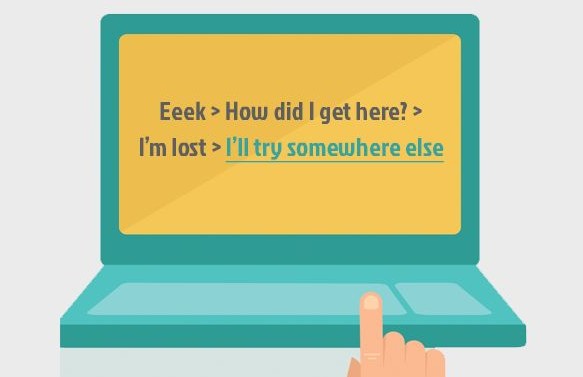The customer is not always your user, so good UX shouldn’t only be customer-facing.
User-centered design isn’t only good for improving the customer-facing aspects of your business, such as marketing and the product interface. Applying user-centered design can provide you productivity and profitability.
Below you will find 4 ways to leverage better UX design internally to trim your business’ costs and fatten up those profit margins. As it turns out, better UX can accomplish a lot!
Better UX reduces support volume
When your website or your web application is easy to use, your customers no longer need support.
Intuitively-designed interface reduces the volume of support tickets your team receives, as well as the associated cost of responding to them all.
Following good UX guidelines to reduce this burden also frees your team up to focus more on customer success with the product, instead of tackling problems — a double-win!
Better UX design streamlines infrastructure costs
Think about the last time you got lost on a website or stuck while using a web application — what’d you do?
Confused users create extra burden on your business’ infrastructure, whether it’s your internal processes, tools, or backend systems — especially with SaaS products, where every page refresh can result in extra queries to your product’s database and unnecessary API calls (some of which you might even be getting charged for by using 3rd party vendors).
Great UX design means your users know where they’re going while using your product and get what they want the first time around, without multiple unnecessary refreshes or backtracking through the maze of your different interfaces. This relieves the stress on your poor servers & cuts those API bills.
This doesn’t only apply to digital businesses. How many times per day should your employees have to physically answer the phone just to tell a customer your brick & mortar business’ hours? This is a great example of a repetitive task and burden on your employees that can be almost completely eliminated by simply ensuring that your hours appear prominently somewhere in your customer experience.
Better UX lowers your training costs
Wouldn’t it be amazing if every new employee you hired was able to magically plug in and be productive from day one? You’d never have to pair them up with more experienced folks, and there’d never be any mistakes or misunderstandings. Unfortunately, we don’t live in that sublime universe, and instead companies must sink large amounts of time, money and treasure into onboarding new hires — but there is a way to get closer to that promised land.
If your website is easy to access, learn and master, you’ll have an easier time training each new employee, which provides a recurring benefit as your headcount expands.

With more intuitive interface, your business reach proficiency faster, and your existing team isn’t diverted as much from other work to help train them. As an additional bonus, the more intuitive your business’ internal tools are, the less specialized your new hires need to be, meaning you’re able to recruit from a much wider potential pool of talented candidates, as well as hire for better cultural fit, instead of simply hiring based on skills proficiency alone.
Better UX design increases productivity
For a non-software example, spare a thought for busy bartenders at a crowded bar. When you’ve got patrons stacked 6 people deep screaming out their drink orders over “I Can’t Feel My Face”, which interface would you prefer to be hurriedly punching them into?
Now, as the bar owner, consider which interface you think would result in fewer mistakes made in such a chaotic environment, thereby resulting in fewer refunds and more tips for your bar staff?
 History shows us that leveraging better UX design for your internal systems and tools can provide massive, recurring benefits to your business that compound over time.
History shows us that leveraging better UX design for your internal systems and tools can provide massive, recurring benefits to your business that compound over time.
User-centered design empowers you to reduce your support, infrastructure and training costs, as well as increase your employees’ productivity — all of which has the effect of driving greater profit for your business.
http://www.dtelepathy.com/blog/design/using-ux-to-unlock-hidden-growth-profitability


